The Waxwing is in a small group of songbirds that look like brown or grey cardinals. They are similar in size and shape, and also have a pointed crest of feathers on their heads.
Their color ranges from pale grey to light brown, and they often have brightly colored wing or tail tips. There are three different species of waxwings, cedar, Bohemian, and Japanese waxwings. Read on to learn about the waxwing.
Description of the Waxwing
The exact appearance of these birds varies based on the species, but most are light tan colored. They have bright colored wing or tail tips, usually red, yellow, or orange. Their heads have a short crest of feathers, which they can raise or lower.
As a whole, these are relatively small birds. Most individuals measure anywhere from five to eight inches long, and weigh no more than a few ounces.
Interesting Facts About the Waxwing
These little birds have a number of interesting behaviors and traits. These adaptations help them survive and compete with other, similar, birds.
- Waxwing – These birds get their name from the coloration at the tips of their wings. Not only do their wings look as if they dipped them in sealing wax, but they also feel like it as well. The color comes from wax-like secretions in the tips of the feathers. However, this feature is not present on all birds.
- Odd Changes – Sometime in the 1960’s, some individual cedar waxwings began displaying orange colors, rather than the usual yellow. Scientists have discovered that this difference in color came from a new food source, the honeysuckle. Humans introduced the honeysuckle into the waxwing’s range, and the different colored pigment actually changed the color of the birds!
- Punch Drunk – These birds make a practice of eating fruit. In fact, it is one of their favorite foods! Sometimes, the fruits and berries begin to ferment before the birds get to them. When the waxwings eat the fermented berries, they can actually become intoxicated. This behavior is also present in American robins.
- Live Fast – Like many small songbirds, waxwings have relatively short lifespans. The lifespan varies slightly based upon the species, but the average is around five years. The oldest recorded waxwings usually live no longer than eight years or so.
Habitat of the Waxwing
These birds subsist primarily on fruit, and thus live in habitats with plenty of vegetation to provide that food. They live in a variety of forests, usually coniferous, deciduous, or a mix of the two.
Some also live in meadows and grasslands, as well as desert edges and more. In addition, these birds live in urban areas, primarily because many ornamental trees and shrubs grow edible berries.
Distribution of the Waxwing
The distribution of this bird depends on the species. Japanese waxwings live in Asia, from Russia to China, Japan, and Korea. Cedar waxwings live in North America, across Eurasia, and into parts of Central America. They range from parts of Canada, throughout the United States and Mexico, and into portions of Central America.
Finally, Bohemian waxwings have a similar range to their cedar waxwing cousins, but usually range farther north. They live primarily in the northern United States, across much of Canada, and into Alaska.
Diet of the Waxwing
While each species varies, all waxwings are primarily fruit-eaters. Their diets usually contain a mixture of insects and fruit, with the insect portion of the diet increasing during the spring and breeding season. While reproducing, the birds need higher amounts of protein, both for egg laying and chick rearing.
Some of the types of fruit and berries that they eat include juniper, honeysuckle, cedar, strawberry, raspberry, hawthorn, and more. Their insect diet consists of flies, dragonflies, mayflies, and other flying insects.
Waxwing and Human Interaction
For the most part, waxwings and humans coexist relatively easily. Though habitat destruction is detrimental to the birds, they also live in urban areas where people plant fruiting shrubs and trees.
Because of this, their populations remain stable, and the IUCN lists both the Bohemian and Cedar waxwings as Least Concern, though the Japanese waxwing is Near Threatened.
Domestication
Humans have not domesticated waxwings in any way.
Does the Waxwing Make a Good Pet
No, waxwings do not make good pets. They are wild animals, and have specific dietary needs. In many places, it is illegal to own a waxwing as a pet. In the United States, the Migratory Bird Act makes it illegal to own a waxwing.
Waxwing Care
In zoos, these birds require relatively spacious enclosures. They prefer having a variety of different trees and branches to perch on, as well as different plants and shrubs to forage for berries in.
Their diet replicates their wild counterparts as closely as possible. Zookeepers feed them insects and pelleted insectivore diet, as well as a wide variety of fruits and berries.
Behavior of the Waxwing
This bird’s exact behavior depends on the species, but most are fairly social. Even those that are not gregarious and living in large groups still remain loosely associated to other waxwings. This is primarily because they utilize the same food sources.
The waxwings will gather in groups to feed on a particular tree or shrub that has fruit, before moving on to the next source of food.
Reproduction of the Waxwing
Pairs of waxwings are usually monogamous, and both parents participate in nest building and chick rearing. The female lays anywhere from two to six eggs, which must incubate for about two weeks before hatching.
It takes a little over two weeks for the hatchlings to begin learning to fly. Once they fledge, they gain independence relatively quickly.




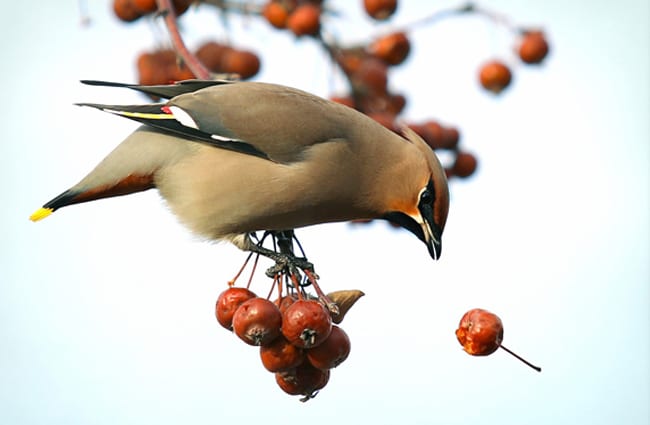

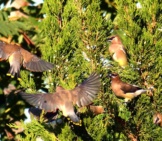
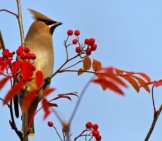

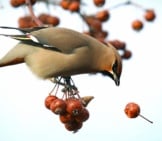
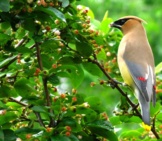
![Red Angus Closeup of a beautiful Red Angus cowPhoto by: U.S. Department of Agriculture [pubic domain]https://creativecommons.org/licenses/by/2.0/](https://animals.net/wp-content/uploads/2020/03/Red-Angus-4-238x178.jpg)












![Red Angus Closeup of a beautiful Red Angus cowPhoto by: U.S. Department of Agriculture [pubic domain]https://creativecommons.org/licenses/by/2.0/](https://animals.net/wp-content/uploads/2020/03/Red-Angus-4-100x75.jpg)

